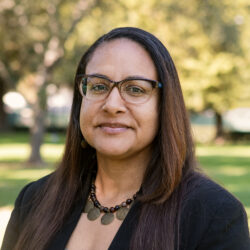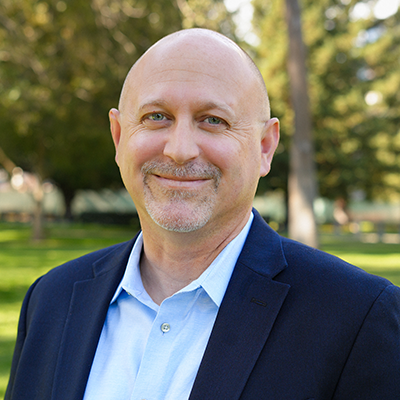History
In 1853, a California system of large, public hospitals for the “mentally disadvantaged” began with the establishment of the Insane Asylum of California at Stockton (which later became Stockton DC) to provide in-patient care and treatment. Since the 1960s, with the passage of the Lanterman Developmental Disabilities Services Act (Lanterman Act), the role of the State-operated Developmental Centers (DC) has been changing.
The resident population has declined from a high in 1968 of 13,400, with thousands on a waiting list for admission, to 1,077 residents as of July 1, 2015 between the three remaining DCs and one Community Facility CF).
Additionally, 2012 Budget Trailer Bill language (AB 1472) imposed a moratorium on admissions to DCs – except for individuals involved in the criminal justice system and consumers in an acute crisis needing short-term stabilization. The aging DC infrastructure, the moratorium on admissions and gradual decline in DC population, associated costs of operation, and the recent development of new community-based residential and service models capable of meeting the service needs of people with significant health and behavioral needs have all reduced the reliance on State-operated DCs.
Closure Planning
Based on the above factors, since 1996, three large DCs and one state-operated community facility have undergone closure processes. In 2014, a statewide task force released their Plan for the Future of Developmental Centers in California making recommendations for the future of DC residents and DC land use. The plan’s recommendations include the continuation of efforts to expand available services and supports in the community, allowing DC residents to transition into community living options that best meet their needs.
The 2015 Budget Trailer Bill (SB 82) enacts several provisions affecting the DCs, including the requirement for the Department of Developmental Services (Department) to submit to the Legislature, on or before October 1, 2015, a plan or plans to close one or more DCs. Efforts are underway to prepare and submit a plan to the Legislature on October 1, 2015 to close Sonoma DC by 2018 and subsequent plans will be developed to close Fairview DC and the Porterville DC General Treatment Area. Implementation of closure plans are contingent upon legislative approval, and following that approval, require the Department to provide quarterly briefings to legislative staff on progress related to the plan. More information about efforts to transform services at Sonoma can be found at Transforming Sonoma Developmental Center – News and Updates webpage.
Section 4474.1 of the Welfare and Institutions Code spells out the specific steps required whenever the closure of a DC is proposed. The Department solicits input from a broad range of stakeholders, including the residents of the DC planned for closure. In addition, at least one public hearing in the community in which the DC is located is held to provide an additional opportunity for public input. All public input will be summarized in a closure plan submitted to the Legislature.
DC Staff
In addition to including input from the above stakeholders in the closure plan, the Department will work with the county in which the DC is located, the regional centers served by the DC, and other state departments using similar classifications, to develop a program for the placement of staff of the DC planned for closure in other DCs, as positions become vacant, or in similar positions in programs operated by or through contract with the county, regional centers, or other state departments, including, but not limited to:
- The Community State Staff Program
- Use of state staff for mobile health and crisis teams in the community
- Use of state staff in new state-operated models
Resident Transition
Planning for where DC residents will move is a very careful and thoughtful process that is individualized to each person. Through the Individual Program Plan (IPP) process, the consumer and their Interdisciplinary Team (IDT) will decide where that person should live. You can find more information on the Transition process.
Previously Closed Facilities
A number of the Department’s facilities are now closed but their history and the many men and women who have lived and worked there remain a valuable part of the Department’s history. You can find details about some of those facilities below:
The 2003-04 Governor’s Budget directed the Department to develop a plan to close Agnews Developmental Center. The Agnews Closure Plan (Bay Area Project) was developed with input from an Advisory Committee consisting of current and former Agnews residents, their families, Agnews employees, regional centers, advocates, and other stakeholders, and may be viewed on the Agnews Closure Plan Main Page. In March 2009, the last consumer moved and the residential facility was closed. Following the closure, Agnews campus was used to provide outpatient clinic services to consumers who resided in the community through April 2011.
In July 2011 the Regional Project of the Bay Area and the Community State Staff Administration were relocated to a leased office space in the city of Campbell to continue providing transition services and support to consumers in the local area.
With the final sale of the land pending, the Agnews campus was vacated and the land was turned over to the Department of General Services.
Located in Southern California’s vibrant San Gabriel Valley Region, LDC bordered the cities of Pomona, Diamond Bar, and Walnut while resting beneath Mt. “Baldy’s” seasonally snowcapped peak. LDC operated 24-hours a day, seven days a week, in order to serve citizens of California who faced the challenges of developmental disabilities. The 87-year history of LDC’s name changes parallels the tremendous shift in perception as to how the people of California understand their fellow citizens who lived at LDC.
Pacific Colony – Thinking “feeblemindedness” to be a menace, the California Legislature created Pacific Colony as a Southern California facility to detain the “feebleminded”. People with developmental disabilities were “inmates”, needing to be locked away from society forever because of their “insanity.” The Pomona location welcomed its first 27 “inmates”, on May 2, 1927. At that time, only the city of Pomona existed in the local area.
By 1946, over 1,900 people crowded into a facility that had only grown large enough to hold 1,512 people. With World War II finally over, the state allocated more money for expansion and improvements.
Pacific State Hospital – The name change in 1953 marked a statewide shift in understanding that had begun in the 1930’s. No longer were residents of Pacific considered “inmates” but “patients” who were sick and needing treatment to be made well. The new use of the socio-psychological team, social workers, psychologist, and parents and innovative practices such as in-service training for nurses provided some of the practical evidence of this shift. The era also marked the start of a movement toward helping people with developmental disabilities prepare for living in the broader community.
Frank D. Lanterman State Hospital and Developmental Center – Championing the cause of people with developmental disabilities throughout his career, State Assemblyman Frank D. Lanterman ensured their civil rights and guaranteed them life-long services through the creation of the Lanterman Act. He also initiated the network of community resources known as the Regional Centers. In honor of his dedication, Pacific changed its name in 1979.
Lanterman Developmental Center – People with developmental disabilities are now perceived as individuals with special needs rather than “patients” and referred to as “residents.” By dropping “State Hospital” during the 1980’s, developmental centers throughout California adopted this philosophy and promoted the fact that all residents receive progressive habilitation training.
LDC’s last resident moved into the community on December 23, 2014 and the facility began warm shut down operations. The facility property was transferred to the California State Polytechnic University, Pomona on July 1, 2015.
In June 2009, in the midst of California’s severe fiscal crisis, the decision was made to close Sierra Vista as it was determined that the men and women residing at Sierra Vista could be well served in other settings within the community and at other state operated facilities. The last person moved from Sierra Vista on December 8, 2009 and the facility was officially closed on February 28, 2010.
Last modified: April 17, 2024



